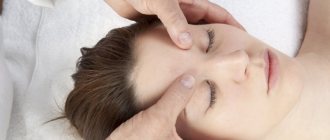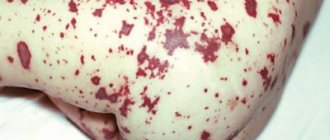Not so long ago, it was believed that migraine occurs only in adults, but recently a similar problem is often observed in children. This form of pathology is mainly found in children of primary school age, but can also occur in adolescents.
The symptoms of abdominal migraine in children are quite pronounced, since not only headaches are observed, but also pain in the abdominal area. Moreover, the child cannot always say exactly where it hurts. Often the pain is localized in the navel area, but can also affect other parts of the abdomen. In this case, the child experiences severe nausea.
Features of the disease
Symptoms of migraine in children do not always manifest themselves only in the form of a headache, since there are several complicated forms of this disease. Each of them has its own specifics.
One of these forms is abdominal migraine. This is a pathology of a neurological nature, in which the usual clinical picture is additionally accompanied by severe abdominal cramps. This condition often occurs in childhood, but can also occur in adolescence and in adults. In boys, the first manifestations of the disease are observed 2-3 years earlier than in girls.
Among the symptoms of migraine in children, it is necessary to highlight the occurrence of severe pain in the abdominal cavity, which is accompanied by malaise, headache, and nausea. Attacks occur periodically and especially severe pain is observed near the navel.
Due to the peculiarities of the development and course of the disease, it is quite difficult to diagnose it, which significantly complicates the treatment process. When the first symptoms of migraine appear in children, you should immediately visit a doctor for consultation, since incorrectly administered therapy will lead to aggravation of the situation and the emergence of even greater problems.
When diagnosing and treating the disease, special attention is paid to provoking factors. Identifying provocateurs and eliminating them allows you to minimize the frequency of exacerbations and reduce the intensity of attacks.
How does abdominal migraine manifest?
The main symptom is intense pain in the center of the abdomen or throughout the abdomen, which lasts at least an hour, but usually about half a day. Sometimes an attack can last up to three days.
Outside of the episode, nothing bothers the child for several weeks or even months.
Along with the pain, there must be at least two other symptoms :
- refusal to eat (occurs in 91%)
- nausea (73 - 91%)
- vomiting (35 - 50%)
But these symptoms do little to help correctly understand the cause of pain, since they occur in many other similar conditions.
But three other complaints suggest abdominal migraine:
- headache
- photophobia
- unusual skin reactions - vasospasm, which manifests itself as unusual pallor (in 93 - 100%) or dilation of blood vessels with redness of the skin (“flushing”).
The child feels better after rest or sleep.
The episodes have a stereotypical pattern , which, although not immediately, is determined by the child’s family.
Episodes often occur completely suddenly, but there may also be warning signs - changes in behavior, refusal to eat, loose stools, an aura like a classic migraine with flashes in the eyes, speech disturbances, numbness or tingling in the legs.
Causes
Doctors cannot say unambiguously under the influence of what factors abdominal migraine develops in children, the symptoms of which cause significant discomfort. Even the mechanisms of development of such pathology have not yet been fully determined. Genetic predisposition and imperfection of the endocrine system in childhood are of no small importance. In addition, children are much more susceptible to external factors than adults. Doctors identify the following causes of abdominal migraine in children:
- the presence of anomalies in vascular development;
- hormonal disorders;
- deterioration of metabolic processes;
- insufficiently good blood circulation;
- low blood glucose levels;
- poor nutrition;
- irrational physical activity;
- emotional overstrain and stress.
TV or computer have a great influence, since if a child spends a lot of time in front of a screen, the likelihood of frequent headaches increases significantly. Negative external influences have a particular impact, in particular such as flickering light, too loud sound, monotonous hum.
If migraine symptoms appear in children under 10 years of age, then in adolescence this unpleasant disease can completely disappear after hormonal changes in the body. In some cases, attacks become very rare, and their symptoms become insignificant. Sometimes the disease can persist throughout life and begins to gradually fade away only in adulthood.
Abdominal migraine and classic migraine.
A very interesting topic for discussion is how related abdominal migraine and the more familiar classic migraine are to headaches.
The connection is undeniable and has been noticed for a long time.
First, children usually outgrow abdominal migraine, but a large proportion of them will develop classic migraine headaches in the future (up to a 70% chance).
Secondly, children with abdominal migraine have poor heredity for classic migraine.
In one study, 90% of children with abdominal migraine had a first-degree relative with classic migraine.
In another study - in 65% of children.
And finally, classic migraine and abdominal migraine are quite often (24-70% of cases) combined in the same child.
By the way, abdominal migraine is often combined with other functional diseases of the gastrointestinal tract, for example, cyclic vomiting syndrome.
Main symptoms
The first symptoms of migraine most often appear in children under 12 years of age, and children aged 5-9 years are mainly susceptible to this disease. Signs of the disease may not be strongly expressed and, in addition, children still cannot say exactly what is bothering them. This makes diagnostics very difficult.
Among the symptoms of migraine in children, it is necessary to note the presence of headache, which mainly occurs in the frontotemporal part. Severe painful sensations have a significant impact on the child’s well-being and behavior. Children become capricious and cry for no reason or, conversely, may become lethargic and uncommunicative.
Basically, the disease occurs without an aura, that is, without visual symptoms, which manifests itself in the form of bright spots in front of the eyes, flickering light, or just fog. The periods between attacks can be quite long, up to several months, so parents often perceive the manifestation of the disease simply as the whims of their child.
It is very important to recognize the first signs and symptoms of migraine in children, as this will ensure faster and easier treatment. Among the manifestations of the disease, one should also note intolerance to strong odors, emotional overexcitation, irritation in bright light.
It is worth noting that a child suffering from an attack of abdominal migraine must be at rest all the time, so parents need to ensure strict compliance with this rule and create a comfortable environment for him. This type of pain is characterized by periodicity. The attacks are repeated after a certain time, and between them the child feels quite normal.
Migraine symptoms
The main symptom is a severe headache lasting from 2 hours to 3 days. Usually it manifests itself unilaterally. The pain itself seems to pulsate.
Migraines are often accompanied by nausea and vomiting. A person is afraid of strong sounds and bright light. The pain may be localized in the eye area. Sometimes a painful attack occurs with an aura, and then visions in the form of flashes of light, lacrimation, double vision, nasal congestion are possible, in especially severe cases - unilateral paralysis of the limbs (arms, legs), blurred or loss of vision, speech disorders, impaired sensitivity in face, torso or limbs.
Migraine classes:
- without aura – pathology is characterized by headache, there is no aura stage (20% in frequency);
- with aura – a classic manifestation of the disease (up to 80% in frequency), as described above.
Migraine in teenagers
Migraine symptoms in children 14 years of age are much more common than in children. This is explained by hormonal changes in the body, which result in various types of stress. The cause of this pathology is mainly overload with learning, which is often observed in schools. It is worth noting that migraine symptoms in children 16 years of age are mainly found in girls, which is determined by the hormonal characteristics of women.
The causes of this disorder are very similar to those in adults. A growing and developing child's body gradually adapts to various external and internal factors, which is why during this period there is significant stress on the nervous and endocrine systems. And this, in turn, causes the development of the disease.
Carrying out diagnostics
If the first symptoms of migraine occur in children under 10 years of age or older, you should definitely consult a doctor for diagnosis and subsequent treatment. Initially, you need to distinguish the disease from various types of problems with the gastric system, as well as other organs.
Particular attention during diagnosis is paid to the genitourinary system of the body. To make an accurate diagnosis, the doctor takes into account the existing symptoms. This disease is characterized by the following symptoms:
- headache;
- pale skin;
- photophobia;
- nausea;
- excessive sweating;
- abdominal pain.
In addition, the doctor studies the family history and finds out whether any of the relatives have had migraine attacks. This is very important, since the disease is mainly hereditary. In this case, it is much more difficult to treat. If migraine is abdominal in nature, then attacks occur periodically, only a few times a year, and the rest of the time the child’s health is quite satisfactory.
If a child often suffers from migraine attacks, it is necessary to keep a journal in which the duration of the attack, the symptoms of the aura, as well as all the events that preceded the onset of discomfort are recorded. In addition, the following diagnostic measures may be required:
- Dopplerography of the brain;
- encephalography;
- radiography;
- tomography.
Only after a comprehensive examination will the doctor be able to make the correct diagnosis and prescribe appropriate treatment.
Symptoms
Migraine symptoms may appear a day or two before the headaches begin.
This is called the prodrome stage. At this stage, symptoms may include:
- Food cravings
- Depression
- Fatigue or lack of energy
- Frequent yawning
- Hyperactivity
- Irritability
- Neck stiffness
The aura appears after the prodrome stage. During an aura, you may experience problems with vision, touch, movement and speech. Examples of such difficulties:
- Difficulty speaking clearly
- Tingling sensation on the face, arms and legs
- You see flashes of light or bright spots
- Temporary loss of vision
The next stage is an attack. This is the most acute and severe stage when migraine occurs directly. In some people it may replace or occur during the aura. The attack can last from several hours to several days. Symptoms may appear differently in different people. Some of them may be as follows:
- Increased sensitivity to light and sound
- Nausea
- Pain on one side of the head, or on the left, on the right, or in the front, or behind, or in the temples
- Throbbing headache
- Vomit
After an attack, the postdrome stage usually begins. At this stage, changes in feelings and moods occur. They “jump” from feelings of euphoria and happiness to feelings of fatigue and apathy. A mild, dull headache will persist.
The duration and intensity of these stages occur to different degrees in different people. Sometimes one of the stages may be completely absent and can pass without headaches.
How to relieve an attack
To improve the child’s well-being and relieve severe pain, it is recommended to put him to bed. It is advisable to first ventilate the room well to ensure access to fresh air. The child needs to create a calm and comfortable atmosphere. It is recommended to apply a cool compress to the forehead.
A light massage of the temporal and occipital parts of the head will help to cope with painful sensations. The movements performed should be as relaxing as possible. During a severe attack, vomiting can relieve the child's condition. However, if there is nausea, but there is no vomiting itself, you can induce it yourself by giving your child boiled, lightly salted water to drink.
How can a doctor make a diagnosis?
In most cases, talking with the family and examining the child is sufficient.
At least two typical attacks of pain within six months are enough for a diagnosis.
Additional examination is required if there are signs that are alarming to the doctor :
- weight loss
- stunting
- vomiting blood or bile
- chronic diarrhea - loose stools
- difficulty or painful swallowing
- pain in the right side of the abdomen (where the appendix is!)
Features of treatment
This disease has a completely uncharacteristic course for ordinary migraine, which often makes it difficult to make a correct diagnosis. The main problem in providing timely treatment is that children complain only of abdominal pain, and as a result, they are treated for completely different diseases.
When characteristic symptoms of migraine appear in children, treatment should be carried out by a neurologist who prescribes appropriate medications and other therapies. The doctor determines which treatment method to choose after conducting a comprehensive diagnosis. You must follow a special diet and exclude harmful foods, caffeine-containing and carbonated drinks from your usual diet. Migraines can be triggered by spices, which is why they should also be excluded.
You should not allow your child's stomach to be empty during the day, but you should also make sure that he does not overeat. You need to consume food in small portions several times a day. Stressful situations should be avoided in every possible way; the educational process should be combined with walks in the fresh air and games. Sports are appropriate, but only in moderation, and the child must choose what exactly he wants to do. You should try to minimize your child’s time at the computer, since it has been proven that computer games reduce vision and lead to migraines.
During an exacerbation of an attack, it is necessary to limit exposure to irritating factors, especially sharp sounds and smells, as well as bright light. The doctor selects all medications for the treatment of migraines in children individually and controls their dosage. Despite the fact that the signs of the disease decrease over time, it is necessary to undergo periodic examinations with a doctor. Sanatorium-resort treatment will be very useful, especially in case of a bad environmental situation.
Abdominal pain syndrome: etiology, pathogenesis and treatment issues
According to the mechanism of occurrence of pain in the abdominal cavity, they are divided into visceral, paristal (somatic), reflected (radiating) and psychogenic
What are the causes of abdominal pain syndrome? What is the treatment for abdominal pain syndrome?
Abdominal pain syndrome is the leading clinical symptom for most diseases of the digestive system. Pain is a spontaneous subjective sensation that occurs as a result of pathological impulses entering the central nervous system from the periphery (as opposed to pain, which is determined during examination, for example, by palpation). The type of pain and its nature do not always depend on the intensity of the initial stimuli. The abdominal organs are usually insensitive to many pathological stimuli that, when applied to the skin, cause severe pain. Rupture, cut or crushing of internal organs is not accompanied by noticeable sensations. At the same time, stretching and tension of the wall of the hollow organ irritate pain receptors. Thus, tension of the peritoneum (tumor), stretching of a hollow organ (for example, biliary colic) or excessive muscle contraction cause abdominal pain. Pain receptors of the hollow organs of the abdominal cavity (esophagus, stomach, intestines, gallbladder, bile and pancreatic ducts) are localized in the muscular lining of their walls. Similar receptors are present in the capsule of parenchymal organs, such as the liver, kidneys, spleen, and their stretching is also accompanied by pain. The mesentery and parietal peritoneum are sensitive to painful stimuli, while the visceral peritoneum and greater omentum are devoid of pain sensitivity.
Abdominal pain is divided into acute, which usually develops quickly or, less often, gradually and has a short duration (minutes, rarely several hours), as well as chronic, which is characterized by a gradual increase. These pains persist or recur for weeks or months. The etiological classification of abdominal pain is presented in table. 1.
According to the mechanism of occurrence of pain in the abdominal cavity, they are divided into visceral, parietal (somatic), reflected (radiating) and psychogenic.
| Figure 1. The cause of abdominal pain may be calculous cholecystitis (ultrasound) |
Visceral pain occurs in the presence of pathological stimuli in the internal organs and is carried out by sympathetic fibers. The main impulses for its occurrence are a sudden increase in pressure in a hollow organ and stretching of its wall (the most common cause), stretching of the capsule of parenchymal organs, tension of the mesentery, and vascular disorders.
Somatic pain is caused by the presence of pathological processes in the parietal peritoneum and tissues containing the endings of sensory spinal nerves.
The main impulses for its occurrence are damage to the abdominal wall and peritoneum.
Differential diagnostic signs of visceral and somatic pain are presented in table. 2.
Radiating pain is localized in various areas remote from the pathological focus. It occurs in cases where the impulse of visceral pain is excessively intense (for example, the passage of a stone) or when there is anatomical damage to an organ (for example, intestinal strangulation). Referring pain is transmitted to areas of the body surface that have common radicular innervation with the affected organ of the abdominal region. So, for example, with increased pressure in the intestines, visceral pain first occurs, which then radiates to the back; with biliary colic - to the back, to the right shoulder blade or shoulder.
Psychogenic pain occurs in the absence of peripheral influence or when the latter plays the role of a trigger or predisposing factor. Depression plays a special role in its occurrence. The latter often occurs hidden and is not realized by the patients themselves. The close connection between depression and chronic abdominal pain is explained by general biochemical processes and, first of all, by the insufficiency of monoaminergic (serotonergic) mechanisms. This is confirmed by the high effectiveness of antidepressants, especially serotonin reuptake inhibitors, in the treatment of pain. The nature of psychogenic pain is determined by personality characteristics, the influence of emotional, cognitive, social factors, the psychological stability of the patient and his past “pain experience.” The main signs of these pains are their duration, monotony, diffuse nature and combination with other localizations (headache, back pain, throughout the body). Often, psychogenic pain can be combined with other types of pain mentioned above and remain after their relief, significantly transforming their character, which must be taken into account during therapy.
| Figure 2. Stone in the common bile duct in a patient after cholecystectomy (MRI) |
One of the types of pain of central origin is abdominal migraine. The latter is more common at a young age, has an intense diffuse nature, but can be local in the paraumbilical area. Characterized by accompanying nausea, vomiting, diarrhea and autonomic disorders (pallor and coldness of the extremities, heart rhythm disturbances, blood pressure, etc.), as well as migraine cephalalgia and its characteristic provoking and accompanying factors. During paroxysm, there is an increase in the speed of linear blood flow in the abdominal aorta. The most important mechanisms for pain control are the endogenous opiate systems. Opiate receptors are localized in the endings of sensory nerves, in neurons of the spinal cord, in the stem nuclei, in the thalamus and limbic structures of the brain. The connection of these receptors with a number of neuropeptides, such as endorphins and enkephalins, causes a morphine-like effect. The opiate system works according to the following scheme: activation of sensory endings leads to the release of substance P, which causes the appearance of peripheral ascending and central descending nociceptive (pain) impulses. The latter activate the production of endorphins and enkephalins, which block the release of substance P and reduce pain.
Serotonin and norepinephrine are essential in the formation of pain. Brain structures contain a large number of serotonergic and noradrenergic receptors, and descending antinociceptive (anti-pain) structures include serotonergic and noradrenergic fibers. A decrease in serotonin levels leads to a decrease in the pain threshold and increased pain. Norepinephrine mediates an increase in the activity of antinociceptive systems.
The presence of abdominal pain syndrome requires an in-depth examination of the patient to clarify the mechanisms of its development and choose treatment tactics. The vast majority of patients with somatic pain, as a rule, require surgical treatment. Visceral pain that occurs in patients both with and without organic lesions of the digestive organs is a consequence of a violation, first of all, of the motor function of the latter. As a result, the pressure in the hollow organs increases and/or stretching of its walls is observed, and conditions arise for the formation of ascending nociceptive impulses.
The motor function of the gastrointestinal tract is determined by the activity of smooth muscle cells, which is directly proportional to the concentration of cytosolic Ca2+. Calcium ions, activating intracellular bioenergetic processes (protein phosphorylation, conversion of ATP into cAMP, etc.), promote the connection of actin and myosin filaments, which ensures muscle fiber contraction. One of the conditions necessary for muscle fiber contraction is high activity of phosphodiesterase, which is involved in the breakdown of cAMP and providing energy for the process of connecting actin with myosin.
A number of neurogenic mediators are involved in the regulation of calcium ion transport: acetylcholine, catecholamines (norepinephrine), serotonin, cholecystokinin, motilin, etc. The binding of acetylcholine to M-cholinergic receptors promotes the opening of sodium channels and the entry of sodium ions into the cell. The latter reduces the electrical potential of the cell membrane (depolarization phase) and leads to the opening of calcium channels through which calcium ions enter the cell, causing muscle contraction.
Serotonin has a significant effect on the motility of the gastrointestinal tract, activating a number of receptors localized on effector cells. There are several receptor subtypes (5-MT1-4), but the most studied are 5-MT3 and 5-MT4. The binding of serotonin to 5-MT3 promotes relaxation, and with 5-MT4 it promotes muscle fiber contraction. At the same time, the mechanisms of action of serotonin on the muscle fibers of the gastrointestinal tract have not been fully established. There are only assumptions about the involvement of acetylcholine in these processes.
Tachykinins, which contain three types of peptides (substance P, neurokinin A and B), bind to the corresponding myocyte receptors and increase their motor activity not only as a result of direct activation, but also due to the release of acetylcholine. Endogenous opiates play a certain role in the regulation of intestinal motor function. When they bind to the μ- and δ-opioid receptors of myocytes, stimulation occurs, and with κ-receptors, the motility of the digestive tract slows down.
The main directions of relief of abdominal pain syndrome include: a) etiological and pathogenetic treatment of the underlying disease; b) normalization of motor disorders; c) decreased visceral sensitivity; d) correction of pain perception mechanisms.
Disorders of the motor function of the gastrointestinal tract play a significant role in the formation of not only pain, but also most dyspeptic disorders (feeling of fullness in the stomach, belching, heartburn, nausea, vomiting, flatulence, diarrhea, constipation). Most of the above symptoms can occur in both hypokinetic and hyperkinetic types of dyskinesia, and only an in-depth study allows us to clarify their nature and choose adequate therapy.
One of the most common functional disorders, including those with the presence of organic pathology of the digestive organs, is spastic (hyperkinetic) dyskinesia. Thus, with spastic dyskinesia of any part of the digestive tract, an increase in intraluminal pressure and disruption of the movement of contents through the hollow organ are observed, which creates the preconditions for the occurrence of pain. In this case, the rate of increase in pressure in the organ is proportional to the intensity of pain.
Spastic dyskinesia of the muscular membrane of the wall of a hollow organ or sphincters is the most common mechanism for the development of pain syndrome with esophagospasm, dysfunction of the sphincter of Oddi and cystic duct, and irritable bowel syndrome.
Currently, to relieve pain in the complex treatment of the above diseases, smooth muscle relaxants are used, which include several groups of drugs. Anticholinergics reduce the concentration of intracellular calcium ions, which leads to muscle relaxation. It is important to note that the degree of relaxation is directly dependent on the previous tone of the parasympathetic nervous system. The latter circumstance determines significant differences in the individual effectiveness of drugs in this group. Both non-selective (belladonna preparations, metacin, platiphylline, buscopan, etc.) and selective M1-cholinergic blockers (gastrocepin, etc.) are used as antispasmodics. However, rather low efficiency and a wide range of side effects limit their use for pain relief in a significant proportion of patients.
The mechanism of action of myotropic antispasmodics ultimately comes down to the accumulation of cAMP in the cell and a decrease in the concentration of calcium ions, which inhibits the connection of actin with myosin. These effects can be achieved by inhibition of phosphodiesterase, or activation of adenylate cyclase, or blockade of adenosine receptors, or a combination thereof. The main representatives of this group of drugs are drotaverine (no-shpa, no-shpa forte, spazmol), bencyclane (halidor), otilonium bromide (spazmomen), meteospasmil, etc. When using myogenic antispasmodics, as well as M-anticholinergics, it is necessary to take into account significant individual differences in their effectiveness, lack of selectivity of effects (act on almost all smooth muscles, including the urinary system, blood vessels, etc.), the development of hypomotor dyskinesia and hypotension of the sphincter apparatus of the digestive tract, especially with long-term use. These drugs are used short-term (from a single dose to two to three weeks) to relieve spasm, and therefore pain.
Among the myotropic antispasmodics, the drug mebeverine (duspatolin) should be noted, the mechanism of action of which is reduced to the blockade of fast sodium channels of the myocyte cell membrane, which disrupts the flow of sodium into the cell, slows down the depolarization processes and blocks the entry of calcium into the cell through slow channels. As a result, myosin phosphorylation stops and there is no muscle fiber contraction. It is also known that the release of calcium ions from intracellular stores as a result of activation of α1-adrenergic receptors leads to the opening of potassium channels, the release of potassium ions from the cell, hyperpolarization and the absence of muscle contraction, which can become the cause of muscle hypotension for a long time. Unlike other myotropic antispasmodics, mebeverine prevents the replenishment of intracellular calcium stores, which ultimately leads to only a short-term release of potassium ions from the cell and its hypopolarization. The latter prevents the development of constant relaxation or hypotension of the muscle cell. Consequently, the administration of mebeverine (duspatolin) only leads to the relief of spasm without the development of smooth muscle hypotension, i.e., it does not impair the motility of the gastrointestinal tract. The drug turned out to be effective for relieving abdominal pain and discomfort, stool disorders caused by irritable bowel syndrome, as well as those arising from organic diseases.
Among the myotropic antispasmodics, the drug hymecromon (Odeston) also attracts attention. Odeston (7-hydroxy-4-methylcoumarin) has a selective antispasmodic effect on the sphincter of Oddi and the sphincter of the gallbladder, ensures the outflow of bile into the duodenum, reduces pressure in the biliary system and, as a result, relieves biliary pain syndrome. Odeston does not have a direct choleretic effect, but it facilitates the flow of bile into the digestive tract, thereby enhancing the enterohepatic recirculation of bile acids, which are involved in the first phase of bile formation. The advantage of odeston over other antispasmodics is that it has virtually no effect on other smooth muscles, in particular, the circulatory system and intestinal muscles.
An extremely promising direction in the treatment of motor disorders is the use of selective calcium channel blockers. Currently, pinaverium bromide (dicetel) from this group is widely used. Dicetel blocks voltage-dependent calcium channels of intestinal myocytes, sharply reduces the entry of extracellular calcium ions into the cell and thereby prevents muscle contraction. The advantages of dicetel include the local (intestinal) effect of the drug, tissue selectivity, and the absence of side effects, including cardiovascular effects. The drug can be used for a long time without fear of developing intestinal hypotension. Clinical studies have shown the high effectiveness of dicetel in the treatment of irritable bowel syndrome and other diseases in which spastic dyskinesia of the colon is observed.
In the relief of pain, a special role is given to drugs that affect visceral sensitivity and mechanisms of pain perception. This applies, first of all, to patients with functional diseases of the gastrointestinal tract (functional dyspepsia, irritable bowel syndrome, functional abdominal pain, etc.) and psychogenic abdominal pain.
Currently, the possibility of using antidepressants, 5-HT3 antagonists, κ-opioid receptor agonists, and somatostatin analogs (octreotide) is widely discussed. Of these, the best studied are antidepressants that exert an analgesic effect in two ways: 1) by reducing depressive symptoms, taking into account the fact that chronic pain can be a mask for depression; 2) due to the activation of antinociceptive serotonergic and noradrenergic systems. Antidepressants are prescribed in therapeutic (but not low) doses (amitriptyline 50-75 mg/day, mianserin 30-60 mg/day, etc.), the duration of their use should be at least 4-6 weeks. The drugs are effective in complex therapy.
Thus, the genesis of abdominal pain is polyetiological and polypathogenetic. Treatment of pain syndrome should be aimed at normalizing structural and functional disorders of the affected organ, as well as normalizing the functions of the nervous system responsible for the perception of pain.
Literature.
1. Autonomic disorders. Guide for doctors. Ed. prof. A.M. Veina. M., 1998. 2. Vein A. M., Danilova A. B. Cardialgia and abdominalgia // RMJ, 1999. 7, No. 9. P. 428-32. 3. Grigoriev P. Ya., Yakovenko A. V. Clinical gastroenterology. M.: Medical Information Agency, 2001. P. 704. 4. Ivashkin V. T. Irritable bowel syndrome // Ros. magazine gastroenterol., hepatol., coloproctol. 1993, vol. 2, no. 3. pp. 27-31. 5. Yakovenko E. P. Grigoriev P. Ya. Chronic diseases of the extrahepatic biliary tract. Diagnosis and treatment. Method. manual for doctors. M.: Medpraktika, 2000. P. 31.
Table 1. Etiology of abdominal pain
Intra-abdominal causes
- Generalized peritonitis that developed as a result of perforation of a hollow organ, ectopic pregnancy or primary (bacterial and non-bacterial); periodic illness
- Inflammation of certain organs: appendicitis, cholecystitis, peptic ulcers, diverticulitis, gastroenteritis, pancreatitis, pelvic inflammation, ulcerative or infectious colitis, regional enteritis, pyelonephritis, hepatitis, endometritis, lymphadenitis
- Obstruction of a hollow organ: intestinal, biliary, urinary tract, uterine, aorta
- Ischemic disorders: mesenteric ischemia, infarction of the intestine, spleen, liver, torsion of organs (gallbladder, testicles, etc.)
- Others: irritable bowel syndrome, retroperitoneal tumors, hysteria, Munchausen syndrome, drug withdrawal
Extra-abdominal causes
- Diseases of the thoracic cavity (pneumonia, myocardial ischemia, esophageal diseases)
- Neurogenic (herpes zoster, spinal diseases, syphilis)
- Metabolic disorders (diabetes mellitus, porphyria)
Note. The frequency of diseases in the headings is indicated in descending order.
back
Table 2. Characteristics of visceral and somatic pain
| Signs | Type of pain | |
| Visceral | Somatic | |
| Character | Pressive, spastic, dull | Acute intense |
| Localization | Diffuse, indeterminate, along the midline | Pinpoint at the site of irritation |
| Duration | From minutes to months | Constant |
| Rhythm (connection with food intake, time of day, bowel movement, etc.) | Characteristic (rhythm can be correct or incorrect) | Absent |
| Irradiation | Occurs with an intense nature and corresponds to the affected organ | Present in most cases |
| Pain on palpation | At the location of the pain | At the location of the diseased organ |
| Drug therapy | Drugs that normalize the motor function of the affected organ are effective | Ineffective and contraindicated |
| Clinical examples | Uncomplicated peptic ulcer, biliary colic, sphincter of Oddi dysfunction, gastric or intestinal ulcers, spastic dyskinesia of the colon, peritonitis, tumors with irritation of the parietal peritoneum | Perforating and penetrating |
back
Drug therapy
To quickly and effectively eliminate the symptoms of abdominal migraine in children, treatment is carried out using drug therapy. Medicines help make the child feel better, as well as reduce the frequency and intensity of attacks. The treatment regimen is drawn up by a neurologist, taking into account the patient’s age, symptoms, and provoking factors. To eliminate the symptoms of abdominal migraine in children, treatment involves the use of drugs such as:
- anti-inflammatory drugs;
- painkillers with a sedative effect;
- antimigraine;
- according to indications - antiemetics.
It is worth noting that anti-migraine drugs are used only if other medications do not bring the required result. Ergotamines and triptans are not prescribed in childhood, as they have a pronounced negative effect on the child’s body. Their use is carried out in the most extreme cases and only under the supervision of a doctor.
To eliminate the symptoms of migraine in children, comprehensive treatment must be carried out. Medicines based on ibuprofen and paracetamol, in particular such as Panadol and Nurofen, will help cope with pain. Sometimes caffeine-containing drugs, such as Askofen and antihistamines (Cetrin), can help.
To achieve a more positive result, sedatives such as Sedafiton, Novo-Passit and antidepressants (Deprim) are prescribed. Throughout the entire period of therapy, it is necessary to take vitamin complexes that will help normalize well-being and prevent the frequent development of relapses.
When the first symptoms of migraine appear in children, treatment must be carried out immediately, since the course of the disease, as well as the likelihood of complications, largely depends on this.
How to help children with abdominal migraine?
The best approach is to prevent attacks.
The doctor, together with the child’s family, analyzes the role of those triggers, the list of which I gave a little earlier.
Then together they think about how to reduce the frequency of triggers.
A proper sleep schedule is required.
Some children may benefit from a certain diet.
When traveling, it is better to make more frequent rest stops and avoid motion sickness.
A psychologist can help the child and family deal with stress.
Consequences
In some cases, the child experiences a severe course of the disease, when migraine attacks continue for several days. This condition is considered very dangerous, since the process of developing an attack becomes uncontrollable, and painkillers have no effect.
During a severe attack, the vessels of the brain fill with an excessive amount of blood and expand, which can lead to oxygen deficiency in the brain and its swelling. In addition, a prolonged attack can lead to a migraine stroke. In this case, the symptoms of the disease persist even after the attack disappears.
Treatment
The attack is stopped with the help of non-steroidal anti-inflammatory drugs. In severe cases, triptans, ergotamines, and ditans are prescribed.
During the interictal period, therapy is prescribed to prevent the occurrence of new episodes. Antidepressants and beta blockers are used.
Psychological correction is also indicated. The patient is advised to follow a daily routine (sleep at least 8 hours a day), nutrition, and avoid eating foods that can provoke an attack.
If migraine is caused by hormonal therapy, the issue of canceling or reducing the dose of hormones is considered. Hyperbaric and normobaric oxygen therapy is relevant. The method is used both for the prevention and relief of attacks.
In most cases, treatment gives a good result and can significantly reduce the number of attacks. If you do not seek medical help, complications such as a stroke or migraine status are possible.
You can make an appointment with a neurologist in Yekaterinburg by phone. +7(343)355-56-57
Carrying out prevention
Abdominal migraine attacks occur completely unexpectedly. So far, there are no ways in medicine to prevent them. However, doctors recommend following a number of rules, knowledge of which helps reduce the frequency of exacerbations and improve a person’s quality of life. Disease prevention includes the following:
- maintaining a correct lifestyle;
- normalization of psycho-emotional state;
- active leisure;
- conducting physiotherapy sessions;
- drug support for the body.
It is imperative to exclude from life factors that cause stress and nervous disorders. Moderate physical activity, walks in the fresh air, trips to the sea are required.
To strengthen blood vessels, therapeutic exercises, contrast showers, and aromatherapy will be useful. It is also necessary to periodically conduct courses of vitamin therapy and use drugs whose action is aimed at eliminating the causes of the disease. Prevention is recommended even for those children who have never experienced signs of abdominal migraine.










